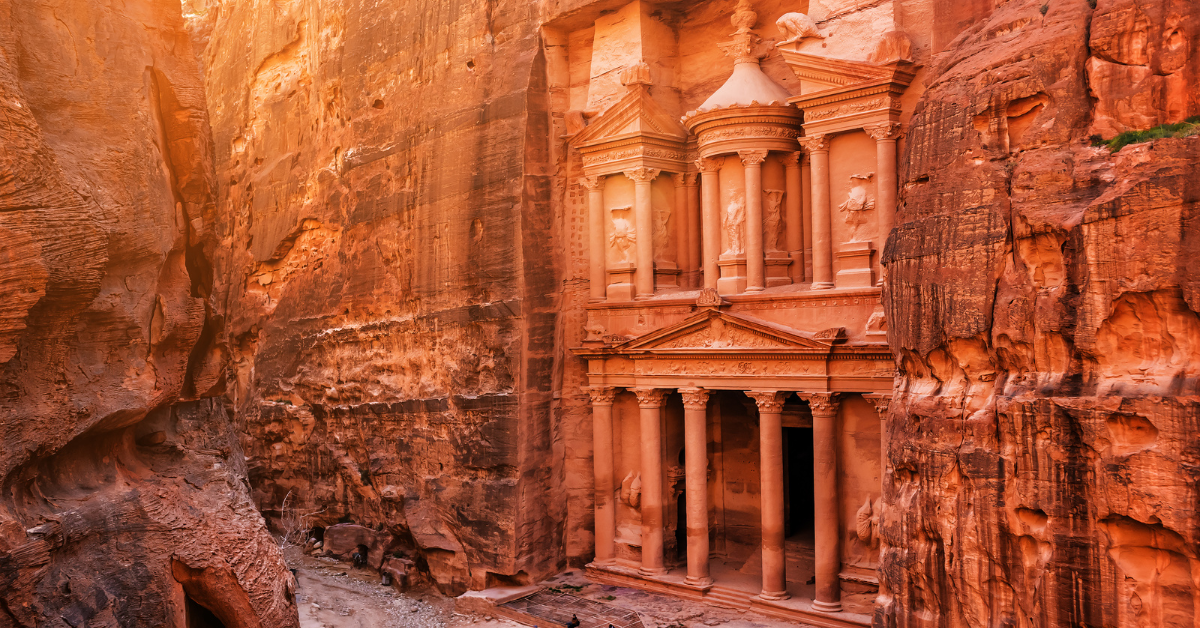Petra, the ancient rock-carved city of Jordan, amazes travelers worldwide with its grandeur. Yet, Japanese visitors often perceive Petra not only as a monument of scale but as a spiritual place in harmony with nature. This perspective highlights subtle beauty, silence, and timelessness that may otherwise be overlooked.
The Appeal of Petra Through Japanese Eyes
Architecture in Harmony with Nature
Petra’s defining characteristic is its structures carved directly into sandstone cliffs. Japanese culture has long embraced the idea of coexisting with nature rather than overpowering it, and this value is evident in traditional gardens and sacred shrines. Sites such as the forest of Ise Jingu and the Zen gardens of Kyoto exemplify the integration of human artistry with the natural world.
When standing before the Treasury, Japanese visitors are less likely to describe it simply as “huge” or “impressive.” Instead, they often perceive it as “a space where nature and human wisdom are seamlessly united.”
Spiritual Resonance for Japanese Travelers
An Experience of Silence and Reverence
Japanese aesthetics are shaped by the philosophy of wabi-sabi, which values simplicity, impermanence, and quietness over showiness. Walking through Petra’s canyons, listening to the wind and watching the subtle shifts in the rock’s color, is an experience akin to quiet meditation.
For many Japanese, Petra is not just a place to be overwhelmed by, but rather a setting to “calm the heart and quietly receive.”
| Aspect | Japanese Perception | Western Perception |
|---|---|---|
| Aesthetic Values | Silence and harmony | Dramatic scale and spectacle |
| Emotional Response | A calming, contemplative experience | Excitement and adventure |
| Focus | Color shifts, texture, atmosphere | Size, grandeur, photogenic views |
Differences in Perception: Japanese vs. Foreign Visitors
A Comparison of Travel Experiences
| Perspective | Japanese Impressions | Foreign Impressions |
|---|---|---|
| Aesthetic | Harmony with nature, wabi-sabi | Grandeur, cinematic spectacle |
| Historical View | Awareness of time’s passage | Glory of ancient civilizations |
| Emotion | Serenity and stillness | Amazement and exhilaration |
| Behavior | Quiet observation | Active photography, adventure |
Foreign visitors often focus on photography and adventure, while Japanese travelers tend to emphasize “the depth of time” and the dialogue between people and nature.
Japanese Travelers’ Descriptions of Petra
The Coexistence of Majesty and Gentleness
Petra’s structures display overwhelming scale, yet the soft tones of sandstone give them a warm, welcoming quality. At sunset, when the rocks glow red, many Japanese travelers liken the sight to temples in Japan bathed in twilight, evoking a deep sense of nostalgia.
A Sense of Time Standing Still
Walking through Petra, one feels as though the lives of people from 2,000 years ago still linger in the air. Japanese visitors often experience this similarly to standing in Nara’s ancient temples—sensing the overlap of past and present, bridging across centuries.
What Foreign Visitors Can Learn from Japanese Perspectives
By adopting a Japanese perspective, foreign travelers can enrich their experience of Petra.
| Japanese Perspective | Explanation |
|---|---|
| Memory over photography | Prioritizing atmosphere and subtle shifts in light |
| Attention to detail | Quietly observing carvings, textures, and patterns |
| Spiritual resonance | Viewing Petra as a sacred space |
For foreigners, Petra may feel like a grand tourist attraction, but for Japanese travelers, it becomes a place of spiritual reflection and inner stillness.
Cultural Parallels Between Petra and Japan
Shared Values Across Cultures
| Japanese Cultural Value | Manifestation in Petra |
|---|---|
| Respect for harmony | City integrated with natural rock formations |
| Appreciation of silence | Wind echoing through the canyons |
| Awareness of time | Structures embodying millennia of history |
These parallels explain why Japanese travelers are uniquely drawn to Petra’s deeper, more spiritual qualities.
Conclusion
For foreign visitors, Petra is often perceived as “a grand cinematic ruin”, while Japanese travelers tend to see it as “a spiritual sanctuary in harmony with nature.” The same site can evoke very different impressions depending on cultural background.
By embracing the Japanese perspective, foreign visitors can transform Petra from simply “a destination for photographs” into “a lasting memory etched into the heart.”






